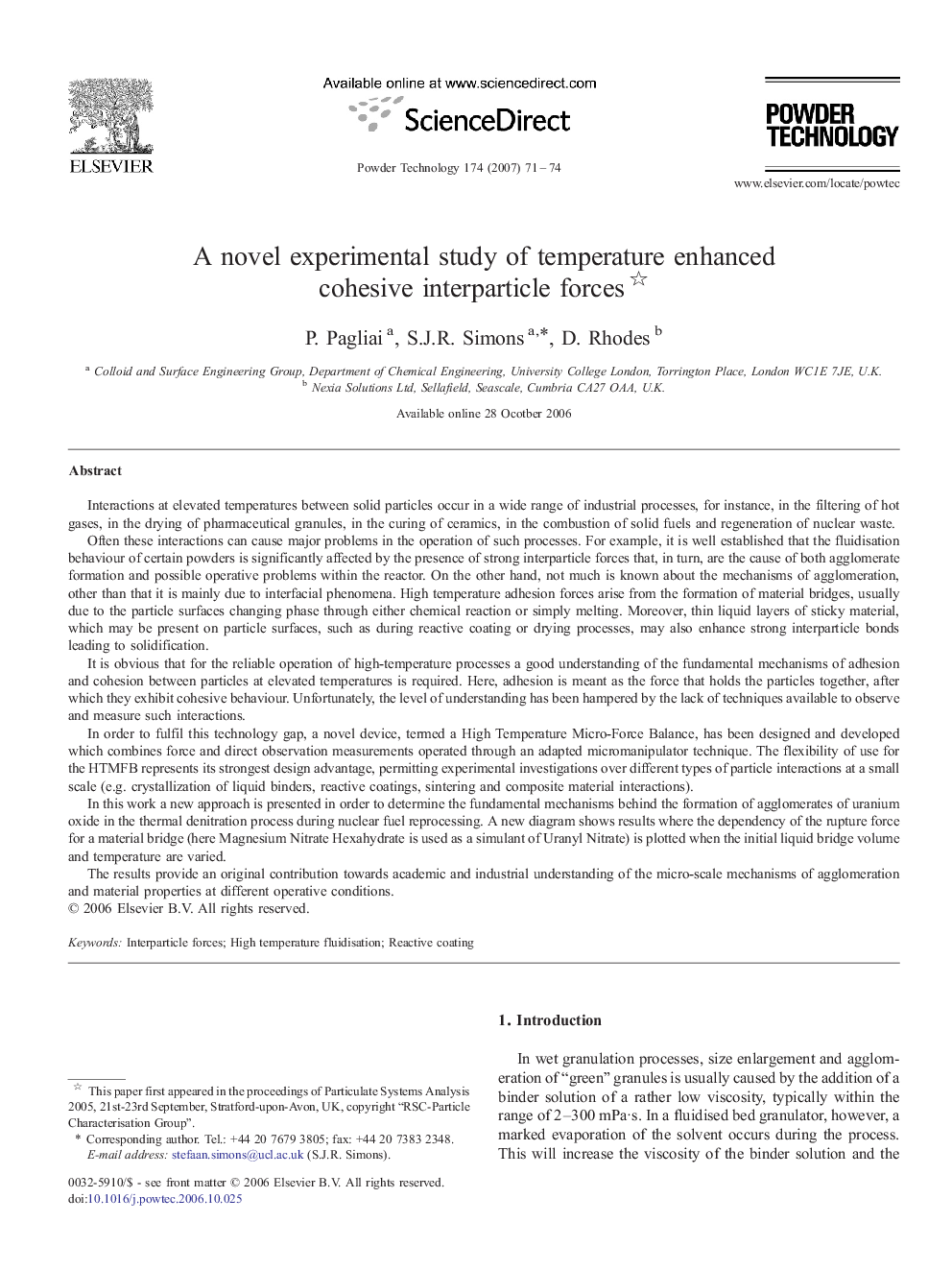| کد مقاله | کد نشریه | سال انتشار | مقاله انگلیسی | نسخه تمام متن |
|---|---|---|---|---|
| 239201 | 465803 | 2007 | 4 صفحه PDF | دانلود رایگان |

Interactions at elevated temperatures between solid particles occur in a wide range of industrial processes, for instance, in the filtering of hot gases, in the drying of pharmaceutical granules, in the curing of ceramics, in the combustion of solid fuels and regeneration of nuclear waste.Often these interactions can cause major problems in the operation of such processes. For example, it is well established that the fluidisation behaviour of certain powders is significantly affected by the presence of strong interparticle forces that, in turn, are the cause of both agglomerate formation and possible operative problems within the reactor. On the other hand, not much is known about the mechanisms of agglomeration, other than that it is mainly due to interfacial phenomena. High temperature adhesion forces arise from the formation of material bridges, usually due to the particle surfaces changing phase through either chemical reaction or simply melting. Moreover, thin liquid layers of sticky material, which may be present on particle surfaces, such as during reactive coating or drying processes, may also enhance strong interparticle bonds leading to solidification.It is obvious that for the reliable operation of high-temperature processes a good understanding of the fundamental mechanisms of adhesion and cohesion between particles at elevated temperatures is required. Here, adhesion is meant as the force that holds the particles together, after which they exhibit cohesive behaviour. Unfortunately, the level of understanding has been hampered by the lack of techniques available to observe and measure such interactions.In order to fulfil this technology gap, a novel device, termed a High Temperature Micro-Force Balance, has been designed and developed which combines force and direct observation measurements operated through an adapted micromanipulator technique. The flexibility of use for the HTMFB represents its strongest design advantage, permitting experimental investigations over different types of particle interactions at a small scale (e.g. crystallization of liquid binders, reactive coatings, sintering and composite material interactions).In this work a new approach is presented in order to determine the fundamental mechanisms behind the formation of agglomerates of uranium oxide in the thermal denitration process during nuclear fuel reprocessing. A new diagram shows results where the dependency of the rupture force for a material bridge (here Magnesium Nitrate Hexahydrate is used as a simulant of Uranyl Nitrate) is plotted when the initial liquid bridge volume and temperature are varied.The results provide an original contribution towards academic and industrial understanding of the micro-scale mechanisms of agglomeration and material properties at different operative conditions.
A novel experimental approach is described, which allows the direct measurement and observation of particle interactions at high temperatures on a micro-scale. The strength generated by solid bridges initially formed between pairs of particles has been measured by rupture tests carried out at various bridge volumes and reaction temperatures. Results have elucidated the fundamental mechanisms behind agglomeration during nuclear fuel reprocessing.Figure optionsDownload as PowerPoint slide
Journal: Powder Technology - Volume 174, Issues 1–2, 16 May 2007, Pages 71–74